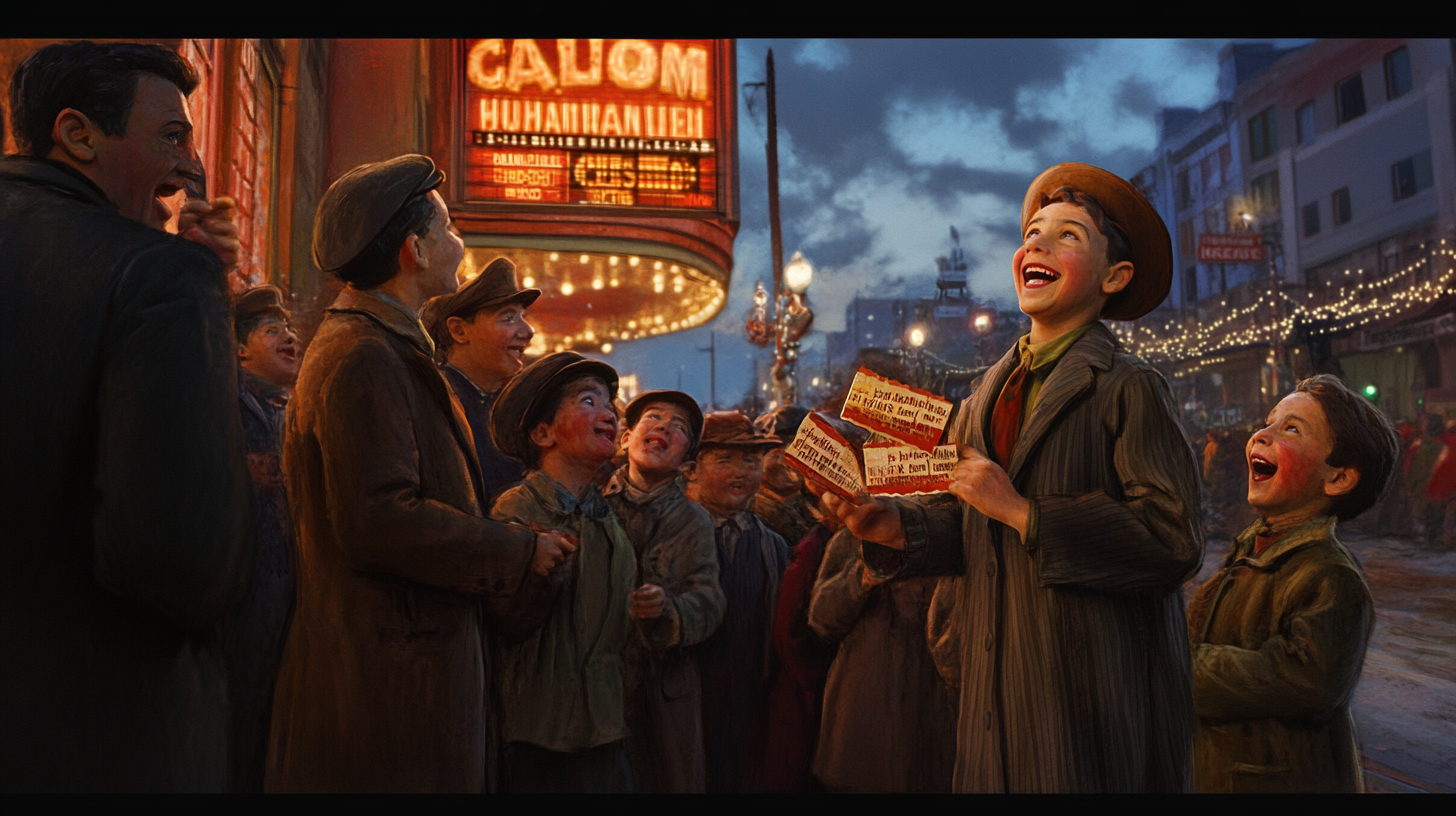Tom Sawyer Brings Smiles to Depression-Era Kids
In the depths of the Great Depression, a time marked by economic despair and scarcity, a community initiative in the Rio Grande Valley (RGV) brought a glimmer of hope and joy to the lives of young children. The San Benito News recently highlighted a remarkable historical account by Rene Torres, which sheds light on how free movie tickets to “The Adventures of Tom Sawyer” at the Capitol Theater lifted spirits and provided relief to those in need.
Reviving Spirits During Hard Times
During the 1930s, the Great Depression cast a long shadow over communities nationwide. In the Rio Grande Valley, the economic downturn led to an influx of drifters seeking refuge in an area perceived to be more prosperous, owing to its mild climate and abundant agriculture. At the time, the Capitol Theater in Brownsville, managed by John C. Fanning, emerged as a beacon of hope and happiness in the community.
In a generous gesture, Fanning decided to offer free tickets to area children, providing a temporary escape from the hardships of the era. “‘I’d hate for a child in Brownsville to miss seeing this classic of child life, ‘The Adventures of Tom Sawyer,’” Fanning reportedly stated, underscoring his commitment to brightening young lives during difficult times.
The Power of Cinema
The choice of “The Adventures of Tom Sawyer,” based on the novel by Mark Twain, was particularly meaningful. Released in Technicolor in 1938, the film adapted the story of one of literature’s most beloved youthful characters, Tom Sawyer. The adventures and playful nature of Sawyer resonated deeply with children facing grim realities, offering a sense of adventure and fun, if only for a few hours.
Local historian Torres, who has long chronicled Rio Grande Valley history with passion and precision, eloquently captured the significance of this initiative. “For many children, an afternoon at the Capitol Theater was not just about watching a movie,” Torres suggested. “It was about experiencing a respite, a brief moment where worries could be set aside, and they could lose themselves in tales of imagination along the Rio Grande.”
A Lasting Impact on the Community
This initiative wasn’t an isolated occasion. Throughout its history, the Capitol Theater frequently played a pivotal role in community support efforts. From offering entertainment as an antidote to the everyday struggles of Depression-era life to supporting the WWII Scrap Iron Drive by accepting children’s scrap iron as theater entry fees, the Capitol Theater remains emblematic of civic responsibility and compassion.
In recent years, Valley residents have continued to reflect on the place of such historical events within their cultural narrative. At the time of the initiative, Brownsville residents such as Maria Hernandez, whose family benefited from the free tickets, shared personal accounts with the San Benito News, expressing how these seemingly small gestures left lasting impressions of kindness and solidarity.
“My abuela always talked about those Saturdays at the Capitol Theater,” Hernandez shared. “Those memories lingered with her for decades, reminding her of the community’s spirit and resilience.”
Continuing the Legacy of Community Support
Today, the Rio Grande Valley continues to embrace community interest and local impact, drawing lessons from its past. Efforts to support underprivileged members of the community are evidenced in modern-day initiatives, from food banks to educational scholarships.
As the San Benito News remains steadfast in its coverage of local events and updates, stories like that of the Capitol Theater inspire residents to consider the importance of accessible cultural experiences. Current establishments and local leaders are encouraged to adopt a similar ethos of giving back, reinforcing the Valley’s commitment to lifting up its most vulnerable.
The Future of Historical Engagement
The story of the Capitol Theater during the Great Depression holds valuable lessons for today. As communities face ongoing challenges, the capacity for creative, collective action to bring joy, even in small doses, remains vital.
Valley historian and educator Angela Leal expressed optimism about preserving and sharing these historical narratives: “The spirit of generosity and unity shown by past figures and institutions in our RGV news stories reminds us all of what’s possible. It underscores the impact of grassroots efforts in fostering a more compassionate, inclusive community.”
For those interested in exploring additional stories of the RGV’s rich history, San Benito News has made these narratives readily accessible via their website, and also actively engages residents on its social media platforms. To delve further into community events and reflections, readers can visit the San Benito News Facebook page and Twitter account for real-time updates and discussions.
This feature on “Tom Sawyer Brings Smiles to Depression-Era Kids” serves as a poignant reminder of the powerful role simple acts of kindness and cultural accessibility can play in strengthening community bonds. As this story from the Capitol Theater echoes through time, it continues to solidify the foundation of hope for the Rio Grande Valley and its residents.







